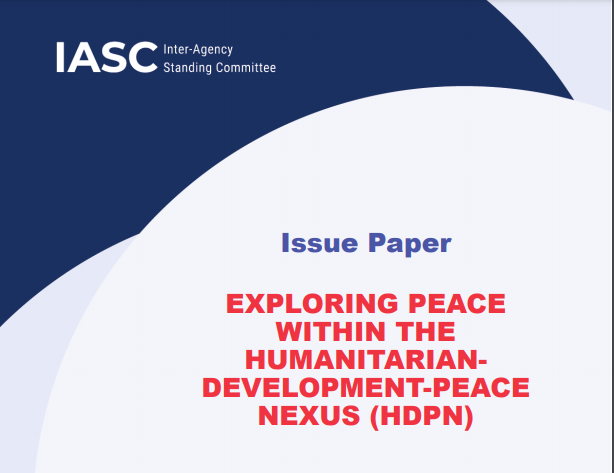
WHO Global Health and Peace Initiative (GHPI)
Health and peace are interrelated. In the words of the Director-General of WHO, Dr Tedros, “there cannot be health without peace, and there cannot be peace without health”. WHO’s Global Health and Peace Initiative was developed as a means to better address the underlying drivers of critical health needs in fragile, conflict-affected and vulnerable settings, since roughly 80% of WHO’s humanitarian caseload, as well as 70% of disease outbreaks that WHO responds to, take place in such settings. It helps to address social determinants of health in these settings, where people’s health is negatively affected by factors such as conflict, displacement, marginalization, and poverty, which aggravate existing inequalities and vulnerabilities.
In fact, addressing issues of inequality and marginalization is critical for achieving positive health outcomes not only in fragile, conflict-affected and vulnerable settings, but in all societies globally. The COVID-19 pandemic demonstrated that health emergencies, or the responses to them, can be a trigger or an aggravating factor for social tension or even conflict. However, at the same time, it also demonstrated that health programs can be powerful enablers in the peace building process and carefully chosen health activities can strengthen social cohesion and empower communities.
The Global Health and Peace Initiative aims to strengthen the role of WHO and the health sector as contributors to improving the prospects for peace – for example, by strengthening social cohesion, dialogue, or resilience to violence. The ultimate objective in doing so is to better protect the health of populations in fragile, conflict-affected, and vulnerable settings as well as wider settings globally. It pursues this goal by promoting and designing health programs that are sensitive to peace and conflict dynamics and, where appropriate, that seek to contribute to peace outcomes. This is known as the ‘Health for Peace' approach. If WHO programming is peace and conflict sensitive, we will mitigate the risk of doing unintentional harm to peace and conflict dynamics and populations living in complex and fragile settings. Moreover, if we pursue appropriate peace outcomes where it is safe and feasible to do so, it will create more space for healthcare, and enable healthcare to reach marginalized and difficult to access populations.
The Initiative falls within WHO’s mandate and is built on WHO’s foundational documents, which recognize that health and peace are closely connected. For example, WHO’s Constitution recognizes that “the health of all peoples is fundamental to the attainment of peace and security”. With its emphasis on strengthening Universal Health Coverage and the rebuilding or strengthening of inclusive health care systems, the Global Health and Peace Initiative contributes to WHO’s Triple Billion Targets, which foresee 1 billion more people benefitting from universal health coverage, better protected from health emergencies, and enjoying better health and well-being, and helps WHO (and Member States) make progress towards the UN Sustainable Development Goals. In addition, with the emphasis on community ownership and empowerment, the Initiative reinforces WHO’s commitment to and implementation of localization.
The Global Health and Peace Initiative is also WHO’s contribution to the growing architecture linking humanitarian assistance, long-term sustainable development and peacebuilding. It furthers the Humanitarian-Development-Peace Nexus by reinforcing the key role of health as a driver of peace and sustainable development and helps to fulfil WHO’s commitment to the United Nations Sustaining Peace Resolutions (A/RES/70/262 and S/RES/2282) which request all parts of the UN family and the World Bank to use their influence for mediation, conflict prevention and conflict resolution.
The Global Health and Peace Initiative is made up of six workstreams:
- Evidence generation through research and analysis;
- Development of a strategic and operational framework;
- Advocacy and awareness-raising;
- Capacity-building;
- Mainstreaming of the Health and peace approach; and
- Partnership development.
The fifth Workstream (mainstreaming of the Health and peace approach) is pivotal in the pursue of the Initiative’s aim of strengthening the role of WHO and the health sector in contributing to improving the prospects for peace. It is the primary workstream under which the Global Health and Peace Initiative will be operationalized in WHO’s work. These 6 workstreams provide the structure for a Roadmap on the GHPI that WHO is developing in consultation with Member States and other stakeholders.
Multimedia












